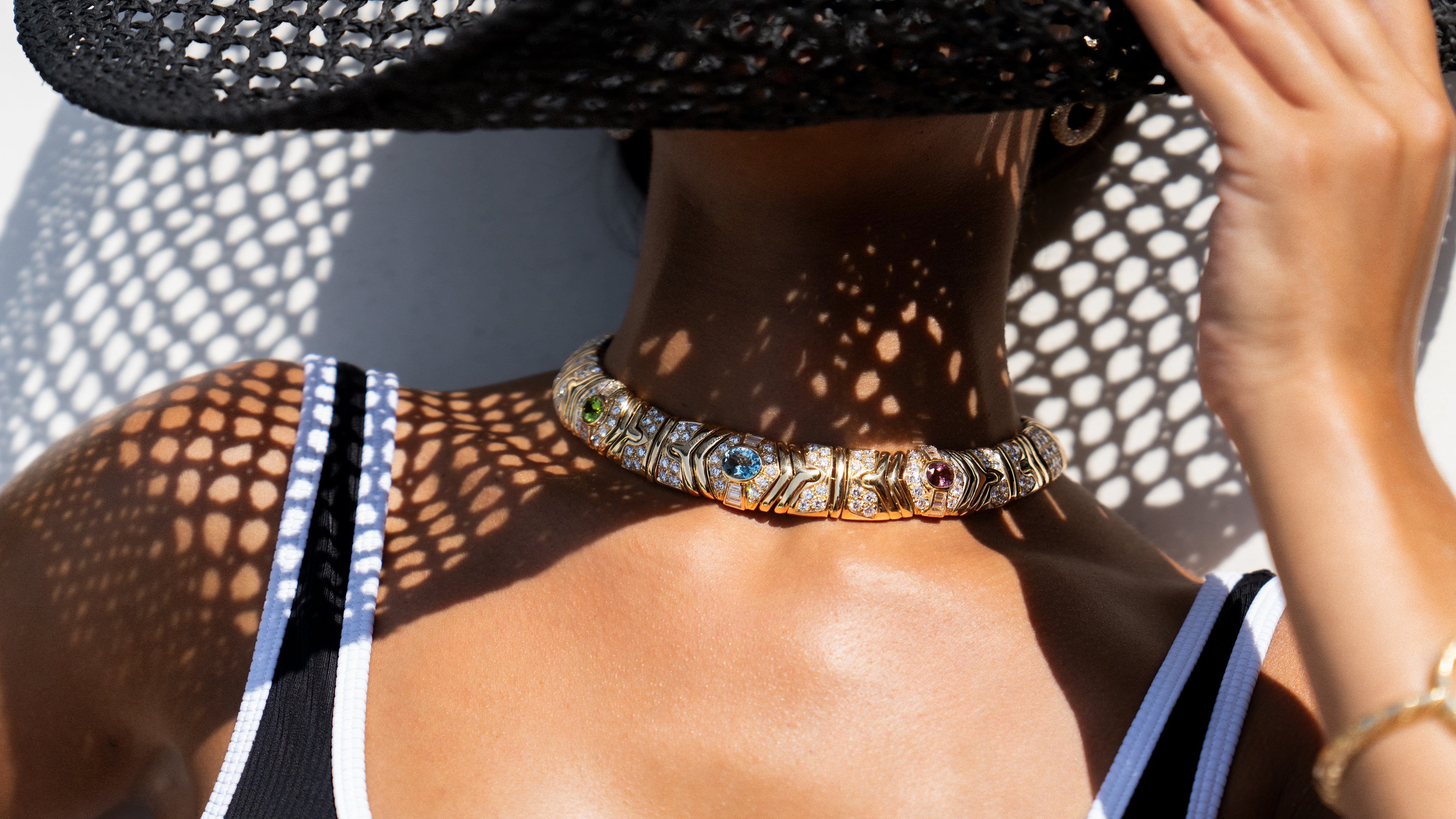Maison Falize
Although best remembered for vibrantly hued cloisonné enamel jewelry, the intriguing history of Maison Falize encompasses several generations and a wealth of beautifully designed jewelry.
The First Falize
Alexis Falize was born in Liége in Belgium in 1811, the son of a shoemaker whose most famous client was Alexander I of Russia. He who confessed to being “stubborn and temperamental” found his calling at an early age after taking drawing classes arranged by his father. Alexis was only 11 when his father died, and he was sent to Paris to complete his education.
When he turned 21, Falize began his apprenticeship with Mellerio dit Meller, a Parisian jeweler. Falize was quick to learn all phases of the business: manufacturing, chasing, engraving, design, sales, and bookkeeping. Of all these skills, the one that best captured his imagination was drafting new designs. Encouraged in his talent by his employers, he was soon producing entire suites on his own, both for stock items and for bespoke client commissions. Two years later, in 1835, Falize began working for Janisset. Another three years passed, when Falize, with the help of Madame Janisset, opened his own workshop, which he purchased from Joureau-Robin, one of Janisset’s suppliers. The new shop came with a caveat – Janisset retained exclusive rights to Alexis’ work. In 1841, Falize registered his work and continued to hone his craft while supplying Janisset. The Revolution of 1848 bankrupted Janisset, freeing Falize to produce and sell his own work.
Henri Vever, a preeminent jeweler who would enjoy his own success in the late 1800s, praised Falize in his book French Jewelry of the Nineteenth Century for revitalizing jewelry and the decorative arts during the reign of Napoleon III (1852-1870). Falize specialized in “artistic” jewelry, fashioned with semi-precious gems, enameling, and intricate details.
Innovation
Falize experimented with enamels from 1860-1865, observing the most talented enamellists of the era. He introduced a new method of cloisonné enameling in 1871. Many copied his work; many others were inspired by the use of brightly colored enamels to expand the art form. His designs featured themes procured from a range of historical periods and cultures, including Japanese, Persian, and Indian.
Lucien Falize took the baton from his father in 1876 when Alexis retired, taking control of the workshops. The training he’d received from his father over the preceding 20 years gave Lucien all he needed to succeed as a highly-skilled goldsmith, enamellist, and designer. Like his father, Lucien was intrigued by Japanese and Renaissance art. Lucien visited London frequently to study and explore the museums, historic buildings, and International Exhibitions.
Recognition
in 1869, Alexis exhibited a selection of jewels under his own name for the first time. He earned a first-class medal at the Union Centrale dex Beaux-Arts Appliqués a l’Industrie, focusing on cloisonné pendants, brooches, chatelaines, and earrings.
In 1878, Lucien Falize was awarded one of only three Grand Prix medals for his jewelry designs, along with the coveted Legion d’Honneur at Paris’ Exposition Universelle. That same year, he was approached by Germain Bapst, the former French Crown Jewelers, to form a partnership. In June 1880, the deal was formalized, and the benefits reaped by the two Maisons would carry them through the next 14 years, after which they amicably parted ways.
Falize was quick to embrace the Art Nouveau movement, seizing on the simplicity of form, the intensity of color in the Japanese enamels, and the exciting result of mixed metalwork.
The Next in Line
In 1894, Lucien was joined by his eldest son, André, who had been apprenticed in both Paris and Lucerne, learning goldsmithing, chasing, and jewelry design. While he was well trained in all aspects of the business, André was not prepared to take on the responsibility for the business three years later when his father suffered a fatal stroke.
André, along with his brothers, Jean and Pierre, rebranded the business as Falize Fréres; his charisma and popularity made him a friend and business associate to a wide social circle that included politicians, actresses, and writers, drawing a wide range of clients to the business.
Under the name Falize Frères, the brothers created beautiful Art Nouveau pieces. They were the recipients of two grand prizes at Paris’ Exposition Universelle in 1900. Their work was a culmination of designs by their father, some between Lucien and André, others begun by Lucien and completed by his sons, and some new pieces designed by the three brothers. The quality and the impressive craftsmanship of the pieces earned them two Grand Prix medals.
In 1904, the Maison received a commission to create the Crown Jewels for King Peter I of Serbia. Falize also produced many pieces for the Romanian Royal Family.
The Final Years
While André’s loyalty and determination to remain faithful to his father’s aesthetic principles were admirable, they didn’t survive the test of time. Trends and fashions changed, but the firm did not keep up. The onset of the Great War further took its toll on the struggling jeweler. From December 1919 to July 1935, there were only 262 sales. Upon André’s death in 1936, the doors of Maison Falize closed for good.
